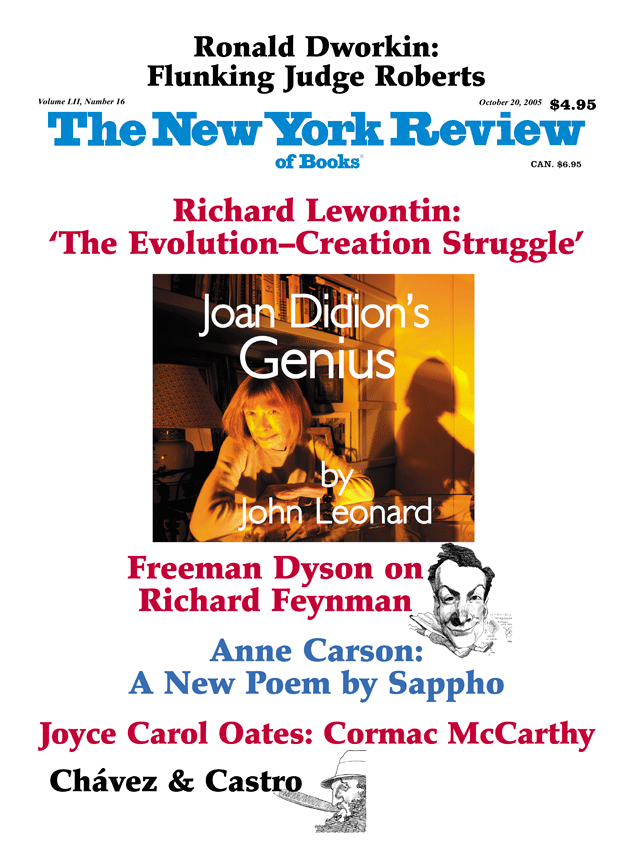In response to:
The New World Order from the July 14, 2005 issue
To the Editors:
In his customarily astute review of books related to America’s role in the twenty-first century [“The New World Order,” NYR, July 14], Tony Judt stresses a point often lost in our political discourse. We salute the flag of the United States “and the Republic for which it stands.” In a previous century dominated by efforts to expand our democratic rights, now carried forward by a twenty-first-century foreign policy out to expand democratic freedoms if necessary at the point of a bayonet, we have lost sight of the qualities of the republic so central to our founding. As I have attempted to point out in several books, including a doctoral thesis, republics are based on civic virtue, popular sovereignty, resistance to corruption (by special interests), and a sense of the commonwealth. By any measure, early-twenty-first-century America is a republic in name only. It is not accidental that America is seeking to play an imperial role in the Middle East, and elsewhere, at a time when its attention to its character as a republic is sadly disappearing.
Gary Hart
Kittredge, Colorado
Tony Judt replies:
I believe that Gary Hart is right. Of course one should not idealize “republics”: over the centuries they have taken a variety of forms. An emphasis upon the “civic virtues,” and a grounding in “popular sovereignty,” are not inherently incompatible with the abuse of power, as the French revolutionaries and others could attest. But whatever their attendant virtues and defects, republics appear always to decline in much the same way: their institutions atrophy, their elites become mediocre and corrupt, their citizens lose interest in political freedoms and public debate or are bludgeoned into acquiescence by the specter of war or disorder. The American republic is robust and distinctive (not least in its longevity); but it is not invulnerable. Indeed, the illusion of invulnerability is perhaps its greatest weakness and may prove its undoing.
This Issue
October 20, 2005


